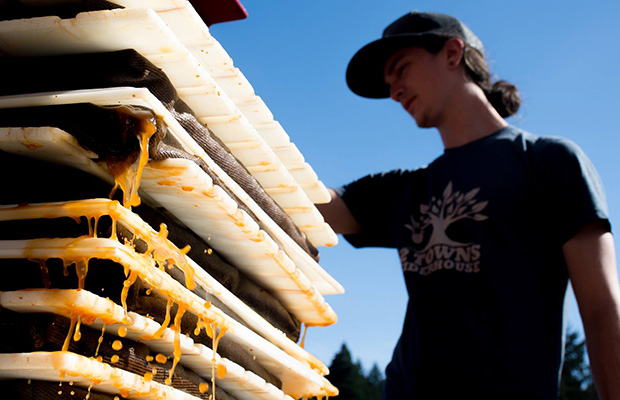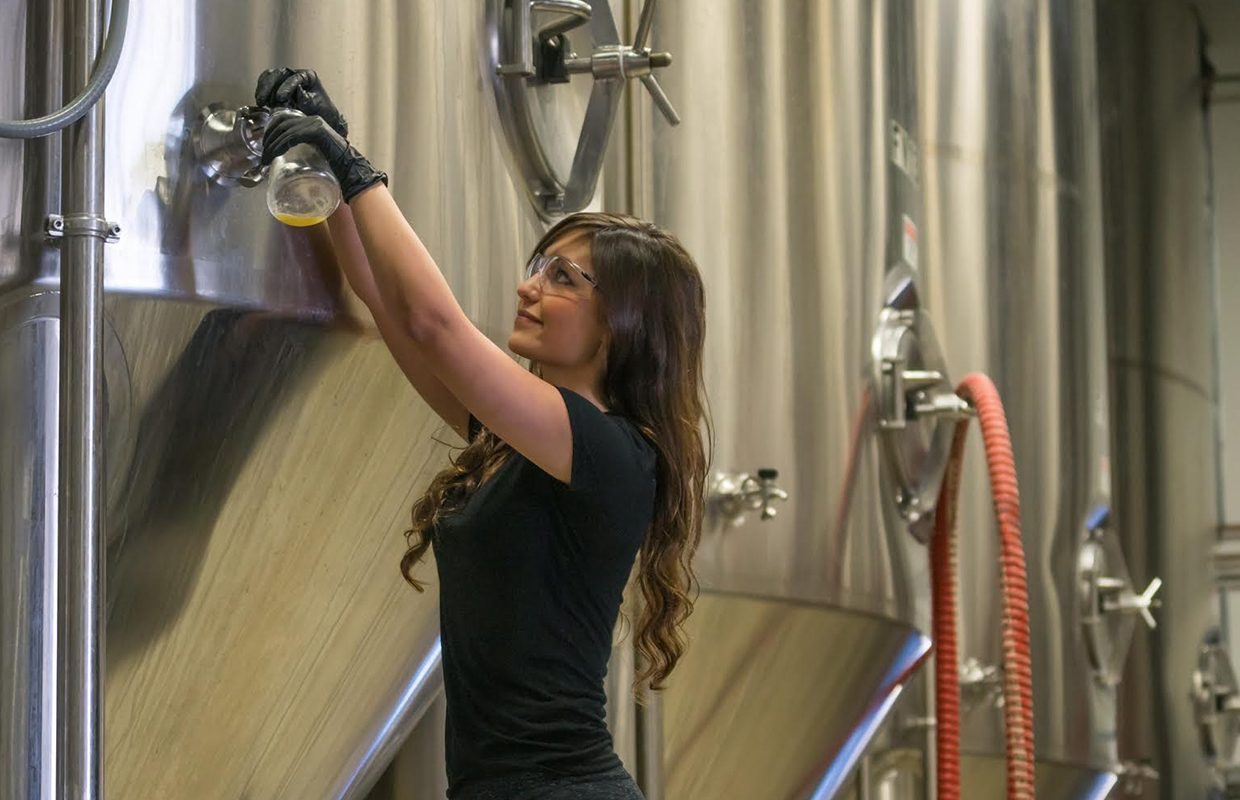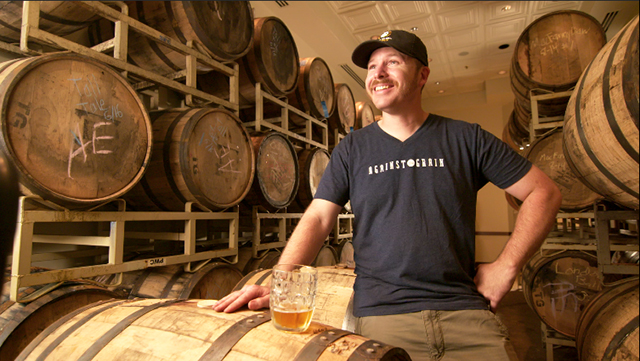
It is important for employees at a cidery to understand not just the basics of cider, but the details, history and culture of cider and all alcoholic beverages. For 2 Towns Ciderhouse, that means putting in the effort on the managerial side to give employees the most success by furthering education. Not just in the culture and history of the brand — but a deeper knowledge of the products.
“A sales team member needs to be able to explain to a wine bar why a McIntosh single varietal cider would be a good choice for the account, then go down the street and explain why a Kingston black bittersweet cider would be a good choice for a craft beer bar,” said Content Marketing Manager, Madison Shirley. “At the same time, it is important for our teams to know the historical context of cider and how we got from the past to where we are now.”
We don’t live in a vacuum, Shirley pointed out, and the cider world is intricately related to agriculture, our current food systems, and all other craft beverages — from wine to beer to seltzer.
“We are all playing in the same space and it is important that we understand our peers and their history as well,” she said.
So 2 Towns makes sure to promote further education with these three steps. All employees are included, reaching into sales, accounting, HR, senior management, service and production.
- Onboarding: “Everyone goes through a two-hour training on apple history & origins, cider history and culture, and the basics of fermentation and styles of cider from around the world.”
- Sensory: “We train everyone in the company on sensory analysis and evaluation, with sensory tests to make sure people actually can differentiate, for example, between acidity and bitterness or pickup defects in cider.”
- Education: “We have ongoing quarterly cider education seminars which cover a wide variety of topics that are tangential to the cider industry, but nonetheless important. For example, one topic we covered was wild fermentation kinetics. Another topic was food pairing ‘rules.’ One very interesting seminar we did was the difference between Belgian Golden Ale, Pilsner, and Pale Ale. All three of those beers have essentially the same ingredients, but are vastly different beers, and we teach why and how those differences occur.”
Photo courtesy 2 Towns Ciderhouse






Be the first to comment